The Pembroke
- 114 units available
- 1 bed • 2 bed
- Amenities
In unit laundry, Granite counters, Hardwood floors, Dishwasher, Pet friendly, 24hr maintenance + more

In our quest for quick fixes, it's easy to reach for a bottle of chemical drain cleaner when faced with a clogged shower drain. However, this seemingly convenient solution often falls short of our expectations and can ultimately cause more harm than good.
In this blog, I’ll two other highly effective methods of unclogging shower drains using physical force. Not only are these methods easier and often more successful, but they also come with the added benefit of being environmentally friendly and safe for your plumbing system.
Say goodbye to harsh chemicals and hello to practical, hands-on solutions that promise to keep your shower drain flowing freely.
Contrary to popular belief, it's not just about what goes down the drain, but also about how these elements interact with each other and the plumbing system. The most common culprits of shower drain clogs are hair, soap scum, and the natural oils from our skin. Over time, strands of hair, which are surprisingly strong and durable, become entangled in the drain. This hair net acts like a catch-all for other debris, notably soap scum - a sticky byproduct of soap and minerals in water. The combination of hair and soap scum creates a dense, gummy mass that gradually narrows the drain's passage.
Furthermore, shower drains are typically not straight pipes but have bends and turns that can trap debris. Over time, these bends become critical points where clogs can form more easily.

The problem with turning to a chemical solution to a clogged drain pipe is that not only can these chemicals be harsh on your pipes and the environment, they also don't remove major blockages. The only way to deal with a serious blockage is to either take apart the pipes or use physical force to dislodge the clog. But what works for a serious blockage can work for a more minor one as well, and I want to talk about why dislodging blockages is also a better way to deal with everyday clogs.
However, some people turn to more "natural" chemical solutions first, so I'd like to take a moment to say why I don't prefer those, either.
The internet abounds with natural home remedies for unclogging drains, with baking soda and vinegar often hailed as an eco-friendly solution. While the appeal of this method lies in its simplicity and the use of non-toxic ingredients, its effectiveness is, unfortunately, more myth than reality.
When baking soda (a base) and vinegar (an acid) are mixed, they react to form carbon dioxide and sodium acetate. This fizzy reaction can dislodge some minor surface-level blockages, but it lacks the penetrating power needed to tackle the dense, stubborn clogs typically found in shower drains.
What vinegar can do, however, is erode the metal in your pipes over time. Traditional drain cleaners have the same problem, actually. That’s why I suggest removing the clog altogether (rather than trying to dissolve it).
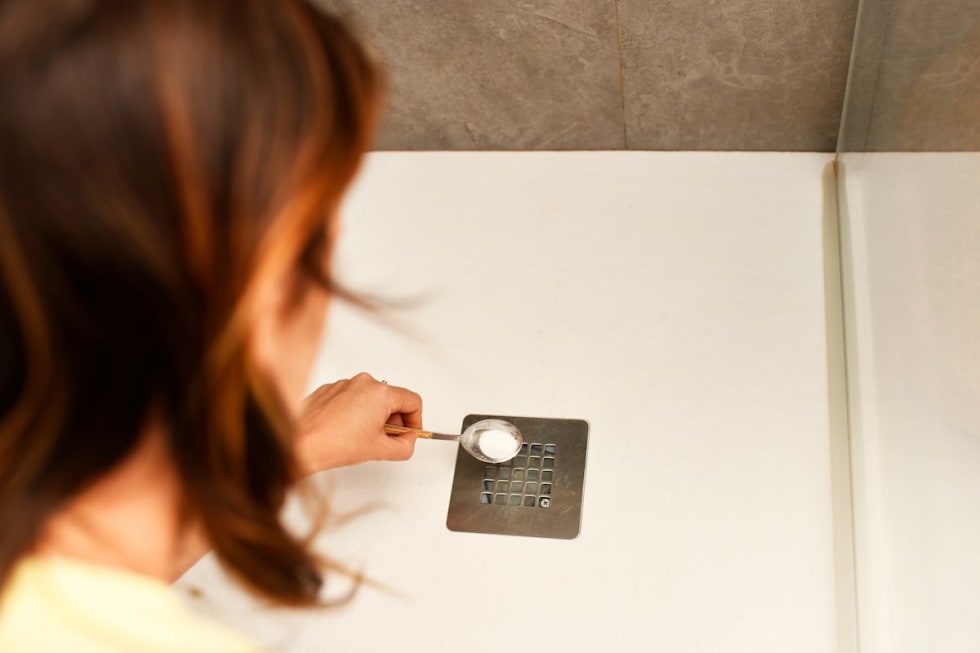
As a long-time renter who hates to call maintenance, I’ve figured out how to do a lot of small repairs over the years, and removing clogs is a big one. This is my favorite method because it’s easy once you get used to it, and it works extremely well. It requires you to buy a tool called a drain snake, sometimes called a plumber's snake. Here’s a step-by-step guide to help you get started:
Drain snakes come in various sizes and styles. For a shower drain, a hand-cranked snake is usually sufficient. Look for a model that's around 1/4-inch thick with a 20 to 25-foot cable. This size is flexible enough to navigate the bends and narrow enough to fit through most shower drains.
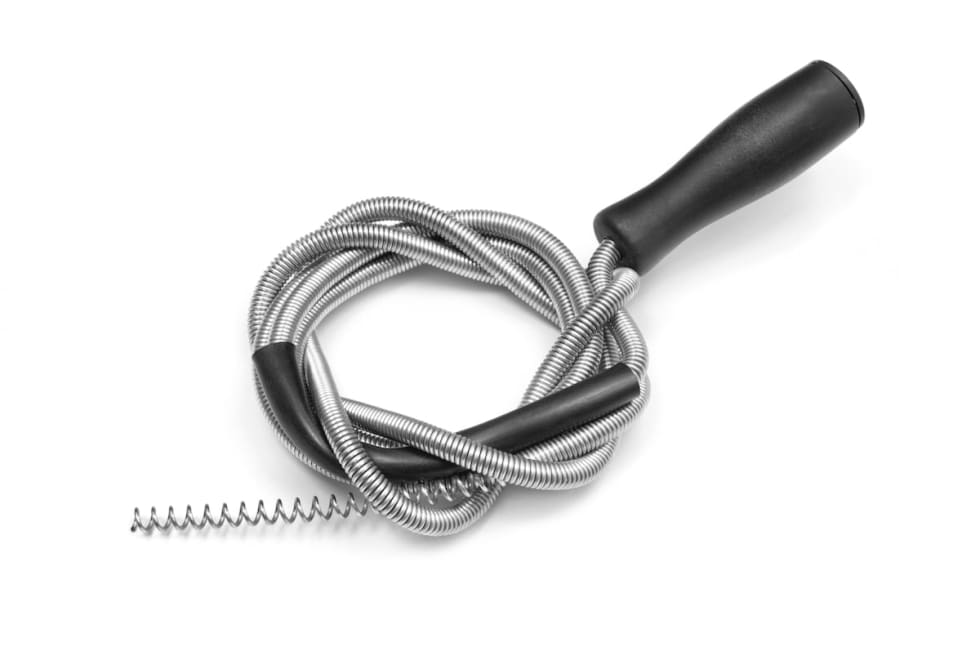
Before beginning, remove any visible obstructions like hair or soap scum from the drain opening. Wear gloves to protect your hands and have a bucket or plastic bag handy to dispose of any debris you remove.

Hold the handle of the drain snake and slowly feed the cable into the drain. Keep the process slow and steady. Forcing the snake can cause it to bend or break.
Once the snake is in the drain, use the handle to crank it slowly while gently pushing it further down. This action helps the snake navigate through the pipes. When you feel resistance, you've likely reached the clog.
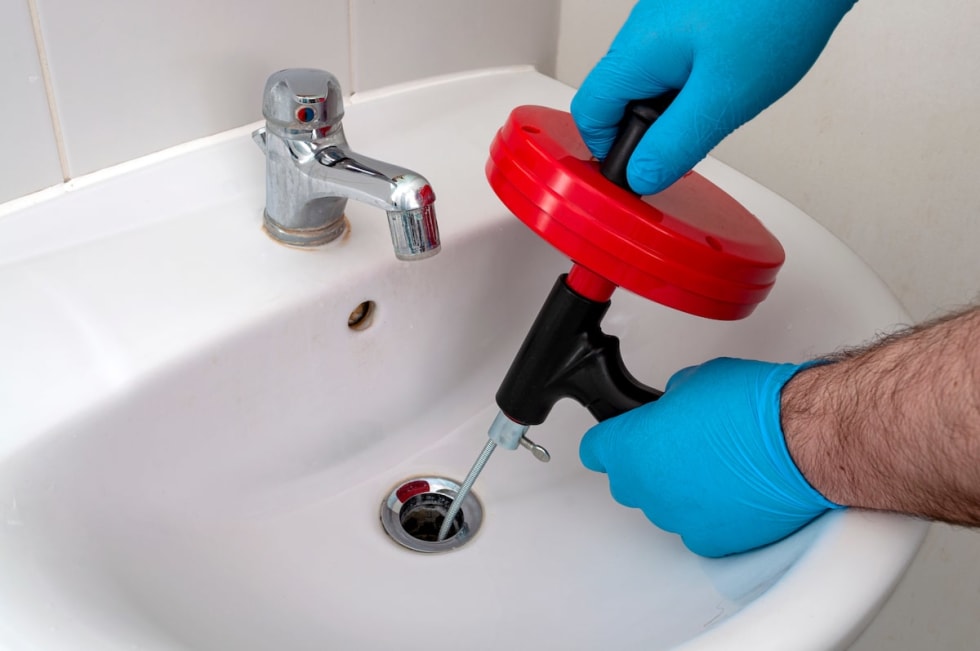
Once you've located the clog, rotate the snake against it. The goal is to either break up the clog or hook onto it. You might need to adjust your approach a few times to get a good grip on the blockage.
Gently pull the snake out of the drain, bringing the clog with it. This might take a bit of finesse to keep the clog attached to the snake. Dispose of the Debris: Carefully remove any debris caught on the snake and dispose of it in the bucket or plastic bag. Avoid dropping the removed clog back into the drain.

Run water down the drain to test if the clog is cleared. If the water still drains slowly, repeat the process. Sometimes, clogs require a couple of attempts to be fully removed.
Using a drain snake may seem intimidating at first, but with patience and careful handling, it's a highly effective way to clear your shower drain without the need for harsh chemicals. This method provides a satisfying and immediate solution to what can often be a frustrating problem.
Are you a more visual learner? Check out this great video from Ask the Maintenance Man on how to use a drain snake:
Chemical drain cleaners can be harsh and may gradually erode the pipes, especially in older plumbing systems. This erosion can lead to leaks and the need for costly repairs. In contrast, a drain snake physically removes the clog without using harsh chemicals, preserving the integrity of your plumbing. Also, not only does a drain snake not introduce anything to the environment, it’s also a one-time purchase that can be used repeatedly.
The plunger method can be a great solution because it’s fast and often doesn’t require people to buy extra tools. In my experience, it doesn’t work quite as reliably as the drain snake, but if you don’t have a drain snake on hand or you want to try something faster, a plunger is perfect.
For shower drains, a flat-bottomed plunger is usually more effective than a flange plunger (designed for toilets). A flat plunger creates a better seal on the flat surface of the shower floor, which is crucial for generating the necessary suction.
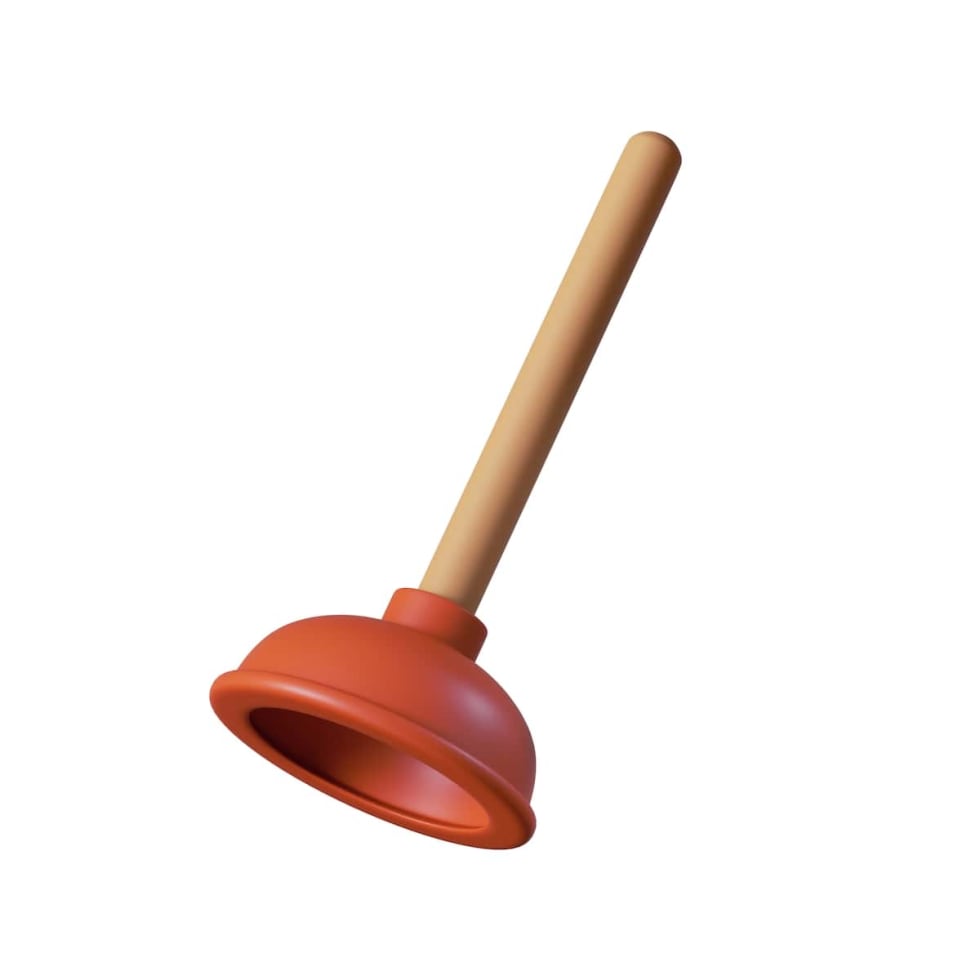
Remove any visible debris from the drain opening. Ensure that there is enough water in the shower to cover the bottom edge of the plunger. This water is necessary to help create a seal and to produce effective suction.
Place the plunger over the drain, ensuring it's completely covered. Press down gently to expel air and create a vacuum. A good seal is key to the plunger's effectiveness. With a firm grip, use a forceful, up-and-down motion to plunge. The pressure created by this motion helps to dislodge the clog. It's important to maintain the seal throughout the plunging process.
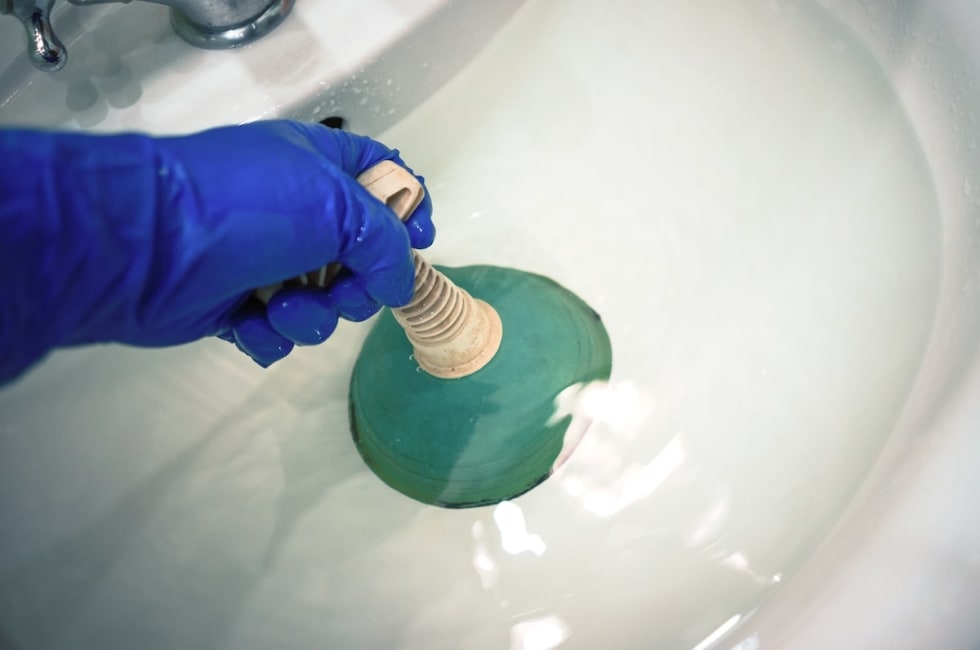
After several plunges, lift the plunger to see if the water drains away. If the clog remains, repeat the plunging process. It may take a few attempts to dislodge the blockage effectively.
Using a plunger is a straightforward and physically direct method to clear clogs. It works by creating a forceful pressure difference that can break up clogs or move them enough to allow water to flush them away. Unlike chemical solutions, plunging is safe for your plumbing, does not involve any harmful chemicals, and is environmentally friendly. Moreover, a plunger is a versatile tool that can be used for various types of drains, making it a handy addition to any household's toolkit.
I know I said no drain cleaners, but you should at least be aware that there are drain cleaners out there that purport to have fewer harsh chemicals. These belong to the enzymatic cleaner family, of which there are a few popular brands (you can usually find them easily just by searching “green drain cleaners.”)
If you find one you want to try, follow the instructions on the packet. It generally involves pouring the substance into the drain, waiting for 1-2 hours, and then flushing with lots of hot water.
If you've had enough of maintenance issues in your current apartment, and you're looking for a new place, let Apartment List help! Our easy quiz can help you get matched in your ideal location, price point, and with great amenities!
Commercial drain cleaners will dissolve hair, but those may not be the best option because they introduce strong chemicals and do not always clear the drain fully. That’s why I suggest removing clogs using either a drain snake or a plunger instead of trying to dissolve the blockage.
In some cases, boiling hot water will dislodge a clog by itself as the hot water can start to dislodge the grease and other small particles holding the clog together. I recommend pairing boiling water with a plunger for better results since the water alone may not be enough to break up tough clogs.
Some clogged showers will eventually drain, but let’s put it this way: If you’ve already tried popular methods for unclogging your shower like hot water or vinegar, and they haven’t worked, then the chance your shower will drain on its own isn’t great. So consider a plunger or drain snake to fully remove the blockage.

In unit laundry, Granite counters, Hardwood floors, Dishwasher, Pet friendly, 24hr maintenance + more
In unit laundry, Patio / balcony, Granite counters, Pet friendly, Stainless steel, Walk in closets + more